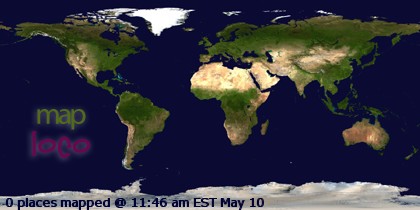More thoughts about nonviolence...
It occurs to me that one of the problems we have with nonviolence as a cause for peace is that we think of the way states interact using a false analogy: that states are like people. In the case of people, in the absence of a judicial system (which is the way things are between states), conflicts that are not resolved through negotiation or bargaining are instead resolved through violence: one person attacks the other, and either kills the other, or the other surrenders. The victor must subsequently remain vigilant to avoid a surprise attack in the night, but otherwise the situation is pretty much resolved, until the victor weakens and dies.
When we talk about states, we discuss it this way, as if states have brains. But states are made up of individuals, and states can add individuals when other individuals die. People can keep secrets from their enemies, but states may contain their own enemies. States sometimes attempt genocide, but generally speaking they fail. So the kind of total victory, and the kind of total unity of purpose, that characterize a dominance struggle between two people, do not exist in the case of states.
And yet we pretend that they do. So Israelis, when they think about fighting their enemy, think of it as a conflict between two people, and think it's possible to totally vanquish their enemy. But the analogy doesn't hold. Israel's actions are predicated on a mental model of its enemy that doesn't reflect how things actually are, and this is why they continue to engage in these failed strategies. And of course the U.S. does the same, in fighting a "war on terrorism," as if there is an enemy with which to engage.
Ultimately, states are ideas, held in common in the minds of their citizens. Aside from some form of instantly transmissible mind control, or actual genocide, the way you fight an idea is to change it. You can't fight it by killing some of the people who have it, because the idea can easily persist and grow, if you give it fertilizer, and the most fertile ground for the idea of a just war against you is in the minds of the friends of the people you've just killed.
So if you want an actual, practical way to stop violence that is being done against a state, the way to do it is to remove the fertilizer that nourishes the idea behind the violence, not to try to kill the bodies that contain the minds that hold the idea behind the violence.
When we talk about states, we discuss it this way, as if states have brains. But states are made up of individuals, and states can add individuals when other individuals die. People can keep secrets from their enemies, but states may contain their own enemies. States sometimes attempt genocide, but generally speaking they fail. So the kind of total victory, and the kind of total unity of purpose, that characterize a dominance struggle between two people, do not exist in the case of states.
And yet we pretend that they do. So Israelis, when they think about fighting their enemy, think of it as a conflict between two people, and think it's possible to totally vanquish their enemy. But the analogy doesn't hold. Israel's actions are predicated on a mental model of its enemy that doesn't reflect how things actually are, and this is why they continue to engage in these failed strategies. And of course the U.S. does the same, in fighting a "war on terrorism," as if there is an enemy with which to engage.
Ultimately, states are ideas, held in common in the minds of their citizens. Aside from some form of instantly transmissible mind control, or actual genocide, the way you fight an idea is to change it. You can't fight it by killing some of the people who have it, because the idea can easily persist and grow, if you give it fertilizer, and the most fertile ground for the idea of a just war against you is in the minds of the friends of the people you've just killed.
So if you want an actual, practical way to stop violence that is being done against a state, the way to do it is to remove the fertilizer that nourishes the idea behind the violence, not to try to kill the bodies that contain the minds that hold the idea behind the violence.


